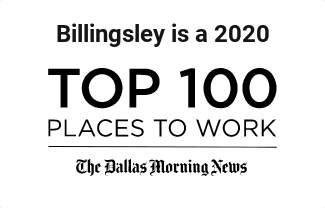America’s Fastest-Recovering Cities
Francesca Levy, 11.19.09, 04:00 PM EST
Click to read the article at Forbes.com
Diversified industry and relatively stable housing give residents in these metros a measure of economic security.
Though Omaha, Neb., seems second-rate to some, Warren Buffett may have been on to something when he chose it for the headquarters of his massive holding company, Berkshire Hathaway. According to our research, the city has hit upon a formula to weather the economic downturn better than any other in the country.
While no region has escaped the recession, in Omaha, three Texas metros, a handful of Northeastern manufacturing bases and select southern cities, diversified industry and relatively stable housing fundamentals have provided local residents with comparatively secure standards of living.
Omaha has had a healthy 1.3% gross metropolitan product (GMP) growth in the past year, and a low foreclosure rate (only one in every 3,246 housing units is in foreclosure), but it sails to the top spot on our list because of its unemployment rate: At 5%, the lowest of the metros we surveyed. Omaha’s economy is less dependent on manufacturing than other Midwestern cities, and is boosted by a strong agriculture sector and growing biofuels industry. And while the city has a big stake in the financial industry–a factor that nearly spelled ruin for metros like New York–it doesn’t specialize in the types of institutions that took big risks and chased exotic financial structures. Instead, it’s home to roughly 30 insurance companies and regional banks like Mutual of Omaha.
Lone Star Luck
In No. 2 city San Antonio, home to four military bases, and Austin, our third-ranked city and the state seat of government, municipal jobs supplement Texas’ robust energy sector. In Dallas (No. 6), it’s a thriving tech industry that buffers it from energy highs and lows. Although Houston (No 8) is invested mostly in oil, it has diversified its energy industry beyond oil rigs into refining and chemicals manufacturing.
Full List: America’s Fastest-Recovering Cities
What’s more, the state’s housing prices never ascended to the unsustainable levels the rest of the country hit at the peak of the housing bubble. Thus, it didn’t crash as hard. These factors have toughened the local economy against a recession that is inextricably tied to real estate.
“Texas didn’t have as big of a boom,” says James P. Gaines, research economist at the Real Estate Center at Texas A+M University. “So we’re not having anywhere near the kind of bust.”
Behind the Numbers
To form our list, we ranked the 100 largest Metropolitan Statistical Areas–geographic entities that the U.S. Office of Management and Budget defines and uses in collecting statistics–in five categories: unemployment rate, GMP (a measure of the size of a city’s economy), foreclosures, home prices and sales rates.
We ranked September unemployment rates (the most recent available by metro) using data from the Bureau of Labor Statistics; the percentage of a metro’s homes in foreclosure with September data provided by RealtyTrac; and the change in GMP between the first and second quarter of 2009 from the Brookings Institution’s MetroMonitor. We also included the second-quarter 2009 year-over-year change in Freddie Mac’s ( FRE – news – people ) Conventional Mortgage Home Price Index–a measure of housing price inflation–and the average days on the market for properties currently on sale (to measure sales rates), using data from Zillow.com. We then averaged the scores for each measure to arrive at an overall ranking.
While there is no foolproof method for resisting recession, a common thread in thriving cities is an economy fed by multiple industries. Former Northeastern industrial hubs like Pittsburgh, and Rochester, N.Y., while they may not seem the likeliest models of economic health, have been able to supplement industrial sector decline with a boost from public-sector jobs that have pumped up the economy even as the private sector declined. They land in the fourth and seventh spot on our list, respectively.
But Rolf Pendall, associate professor of city and regional planning at Cornell University, warns that for upstate New York, this promising news may be temporary.
“We’ve had government spending plugging the gap,” he says. “But it’s hard to say what’s going to happen in the next two years if government spending has to get withdrawn a lot, as it might.”
Pittsburgh’s GMP grew .8% between the second quarter of 2008 and 2009, consistent with the .8% national average. Home prices there remained relatively stable while those in other cities plummeted because the area’s prospects still seemed dim during the housing bubble and speculators looked elsewhere.
“These metros have been so troubled for so long,” says Pendall, “that people didn’t develop irrational exuberance about the prospects in their housing markets.”
Cities where home prices that don’t fluctuate wildly are particularly well-positioned to ride out this recession, because they were spared the domino effect of foreclosures, lost jobs and lost productivity. In San Antonio and Austin, quick sales rates (homes in these cities spend 54 and 73 days on the market respectively compared to a 100-day national median) and home prices that fall above the national average–Austin’s median home price in September, for example, is a healthy $240,000, 7% higher than the average for the top 100 metros, according to data from Zillow.com–indicate that they escaped the perilous zeal for building, and lending, that swept the rest of the country between 2001 and 2007.
There’s a lesson to be learned from these cities, some of which aren’t economically thriving, but all of which are well-equipped to emerge from the recession in a similar position to where they started. Rather than chasing rising home prices or apparently plentiful jobs in one-industry towns, families looking for long-term economic stability should seek spots where industry is diverse and housing price shifts are benign.







